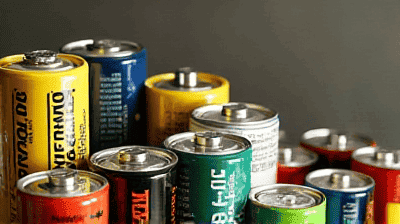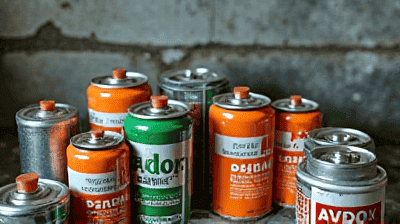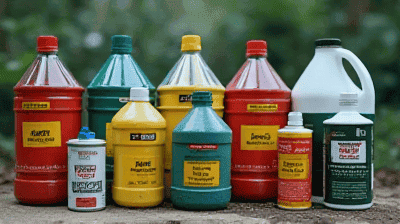How to Safely Dispose of Household Hazardous Waste (Batteries, Paints, Chemicals)
In today’s world, the management of household hazardous waste (HHW) has become a critical concern for both environmental sustainability and public health. Items that are commonly found in homes, such as batteries, paints, cleaning products, and other chemicals, can pose significant risks to human health and the environment if not disposed of properly. Improper disposal of these materials can lead to soil and water contamination, as well as adverse health effects for individuals who may come into contact with these hazardous substances.
Understanding Household Hazardous Waste
What is Household Hazardous Waste?
Household hazardous waste refers to waste products that are typically produced in households and contain substances that are harmful to human health or the environment. These wastes can be ignitable, corrosive, reactive, or toxic. Common examples include:
- Batteries: Lead-acid batteries (such as car batteries), lithium-ion batteries (used in portable electronics), and rechargeable batteries (like those in power tools).
- Paints: Oil-based paints, paint thinners, solvents, and wood preservatives.
- Chemicals: Household cleaners, pesticides, herbicides, and automotive fluids (like antifreeze).
- Electronics: Old electronics, including televisions, computers, and smartphones, often contain hazardous materials like heavy metals.
- Fluorescent Bulbs: These bulbs contain small amounts of mercury, requiring special handling during disposal.
Identifying Hazardous Waste
It is essential to understand how to identify hazardous waste in your home. Look for warning symbols on product labels, such as:
- Flammable: Indicates a substance that can easily ignite.
- Toxic: Signifies substances that can cause harm or death if ingested or absorbed through the skin.
- Corrosive: Refers to materials that can damage living tissue or corrode items they come in contact with.
- Reactive: Indicates substances that may explode or produce harmful gases when mixed with other materials.
Review product labels and safety data sheets (SDS) for information regarding proper disposal methods. When in doubt, it is best to handle the material as if it is hazardous.
The Importance of Proper Disposal
Environmental Protection
Improper disposal of hazardous waste can lead to contamination of soil, water, and air. Chemicals can leach into groundwater, affecting drinking water supplies and ecosystems. For example, heavy metals from batteries can accumulate in the environment, posing long-term risks to wildlife and human health.
Public Health
Hazardous waste can pose serious health risks to the community. Exposure to toxic substances can lead to respiratory issues, skin irritations, reproductive problems, and even cancer. Proper disposal helps prevent accidental exposures and protects the health of families and neighbors.
Legal Requirements
Many regions have regulations governing the disposal of hazardous waste. Failing to comply with these laws can result in fines and penalties. Understanding and following local ordinances ensures that you are legally compliant and protecting the community.
Safe Disposal Methods for Household Hazardous Waste
1. Batteries
Understanding Battery Types
Different types of batteries require different disposal methods:
- Lead-Acid Batteries: Commonly used in vehicles, these batteries are highly toxic and should never be placed in regular trash.
- Nickel-Cadmium (NiCd) and Lithium-Ion Batteries: Found in rechargeable devices; these batteries can be reused and recycled but require special handling.
- Alkaline Batteries: Generally considered safe for disposal in regular trash, though many communities encourage recycling.
Disposal Options
- Retail Drop-Off Programs: Many retail stores offer recycling programs for batteries. Check with local electronics stores, auto parts suppliers, or home improvement centers for drop-off services.
- Household Hazardous Waste Collection Events: Communities often hold special collection events. Contact local waste management authorities for schedules and locations.
- Mail-In Programs: Some organizations provide mail-in programs for used batteries. Ensure packaging meets safety requirements.
2. Paint Products
Types of Paint
Paints can generally be classified into:
- Water-Based Paints: Easier to dispose of and less hazardous.
- Oil-Based Paints: Require special disposal due to toxic solvents.
Disposal Methods
- Dried Paint Method: If you are disposing of small amounts of water-based paint, you can dry it out. Mix with equal parts cat litter or sawdust to solidify and then place in regular trash.
- Collection Events: For oil-based paints and larger quantities, utilize community hazardous waste collection events for safe disposal.
- Retail Take-Back Programs: Some hardware stores provide take-back services for leftover paint, allowing for recycling and proper disposal.
3. Chemicals and Cleaning Products
Identifying Hazardous Chemicals
Chemicals commonly found in households include:
- Pesticides and Herbicides: Can be highly toxic and harmful to wildlife.
- Household Cleaners: May contain hazardous ingredients such as bleach or ammonia.
Disposal Options
- Use Existing Products: Try to use up products according to the manufacturer’s instructions to minimize waste.
- Chemical Collection Events: Many municipalities offer collection events or designated drop-off centers for hazardous chemicals.
- Disposal as Hazardous Waste: Always adhere to local guidelines and dispose of chemical products at approved facilities.
4. Electronics
Understanding E-Waste
Electronics often contain hazardous materials like lead, mercury, and cadmium. Responsible disposal is necessary to avoid environmental pollution.
Disposal Methods
- E-Waste Recycling Programs: Many communities have designated drop-off locations for e-waste.
- Manufacturer Take-Back Programs: Many electronics manufacturers and retailers have take-back programs to recycle old devices responsibly.
- Special Collection Events: Local governments frequently hold e-waste collection events.
5. Fluorescent Bulbs
Identifying Types of Bulbs
Fluorescent bulbs often contain small amounts of mercury, making them hazardous waste.
Disposal Methods
- Recycling Programs: Many hardware stores offer recycling for fluorescent bulbs.
- Hazardous Waste Collection: Use local hazardous waste collection days or drop-off centers for proper disposal.
Best Practices for Managing Household Hazardous Waste
1. Reduce and Reuse
Preventing the generation of hazardous waste should be a priority. Consider the following:
- Purchase Carefully: Choose eco-friendly products and avoid unnecessary purchases.
- Use Up Products: Whenever possible, use existing hazardous materials according to the manufacturer’s guidelines to minimize waste.
- Share with Neighbors: If you have leftover paint or chemicals, consider sharing with neighbors who may need them.
2. Safe Storage
Proper storage of hazardous materials can prevent accidental exposures or leaks. Follow these guidelines:
- Store in Original Containers: Keep hazardous products in their original labeled containers with instructions.
- Keep Out of Reach: Store hazardous materials in a safe location away from children and pets.
- Secure Environment: Ensure containers are tightly sealed and stored in a cool, dry place to prevent degradation.
3. Educate Yourself and Others
Knowledge is key to minimizing hazardous waste:
- Stay Informed: Keep up with local regulations and disposal options for hazardous waste.
- Community Involvement: Participate in community programs to raise awareness about hazardous waste disposal and recycling.
4. Participate in Local Initiatives
Join local environmental initiatives aimed at reducing hazardous waste and promoting sustainability. Volunteering with local organizations can enhance your understanding and contribution to waste management efforts.
Conclusion
Proper disposal of household hazardous waste is essential for protecting both the environment and public health. By understanding the classifications of hazardous waste, recognizing the importance of safe disposal methods, and adopting best practices, individuals can play a critical role in minimizing the risks associated with hazardous materials in the home.
Whether it is through recycling batteries, properly disposing of paints, or participating in local e-waste collection events, each action contributes to a safer, healthier community. As citizens become more informed and proactive about their waste management habits, the impact on the environment will become increasingly positive. Together, we can create a sustainable future by ensuring the safe disposal of hazardous waste today.


